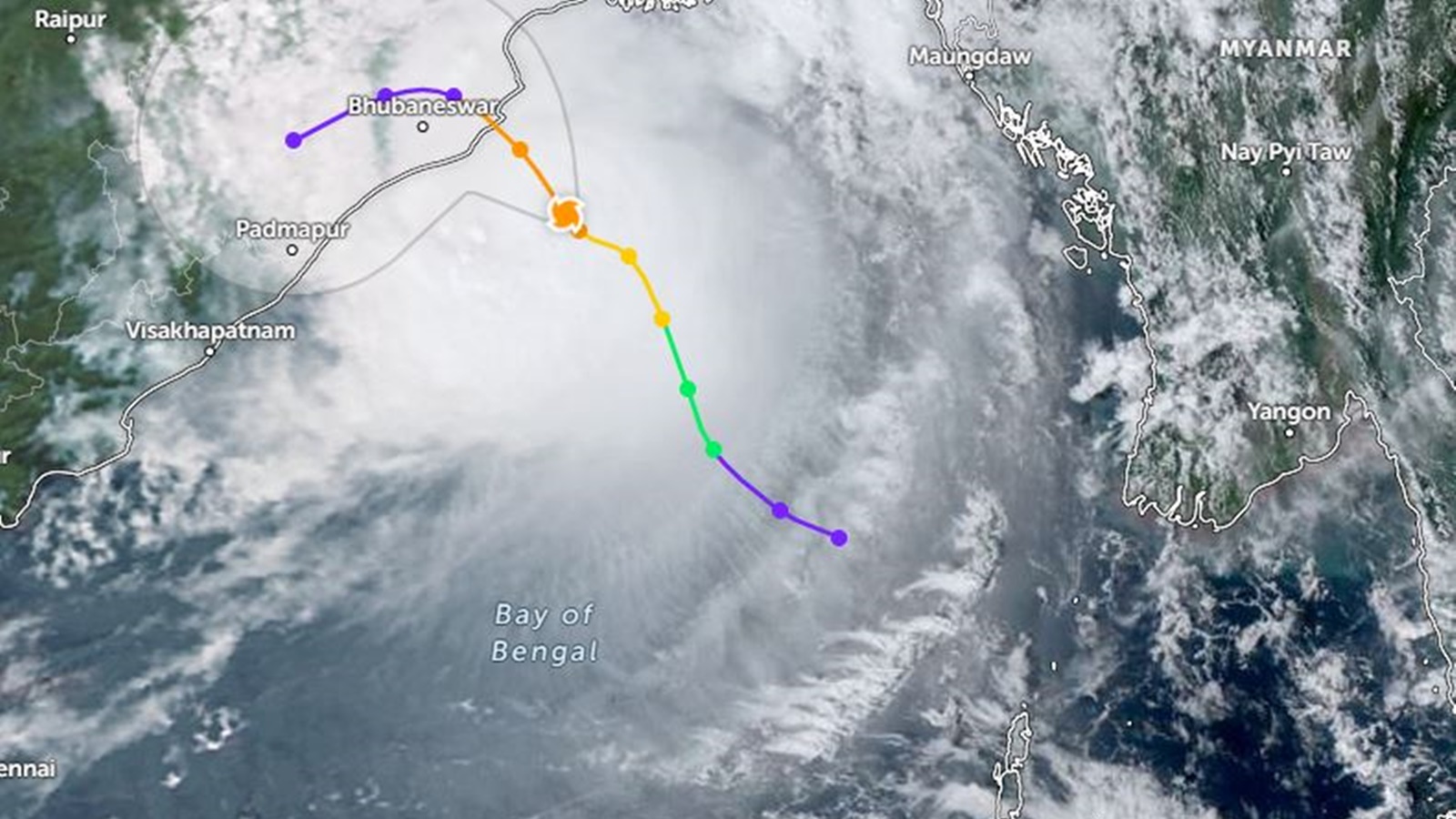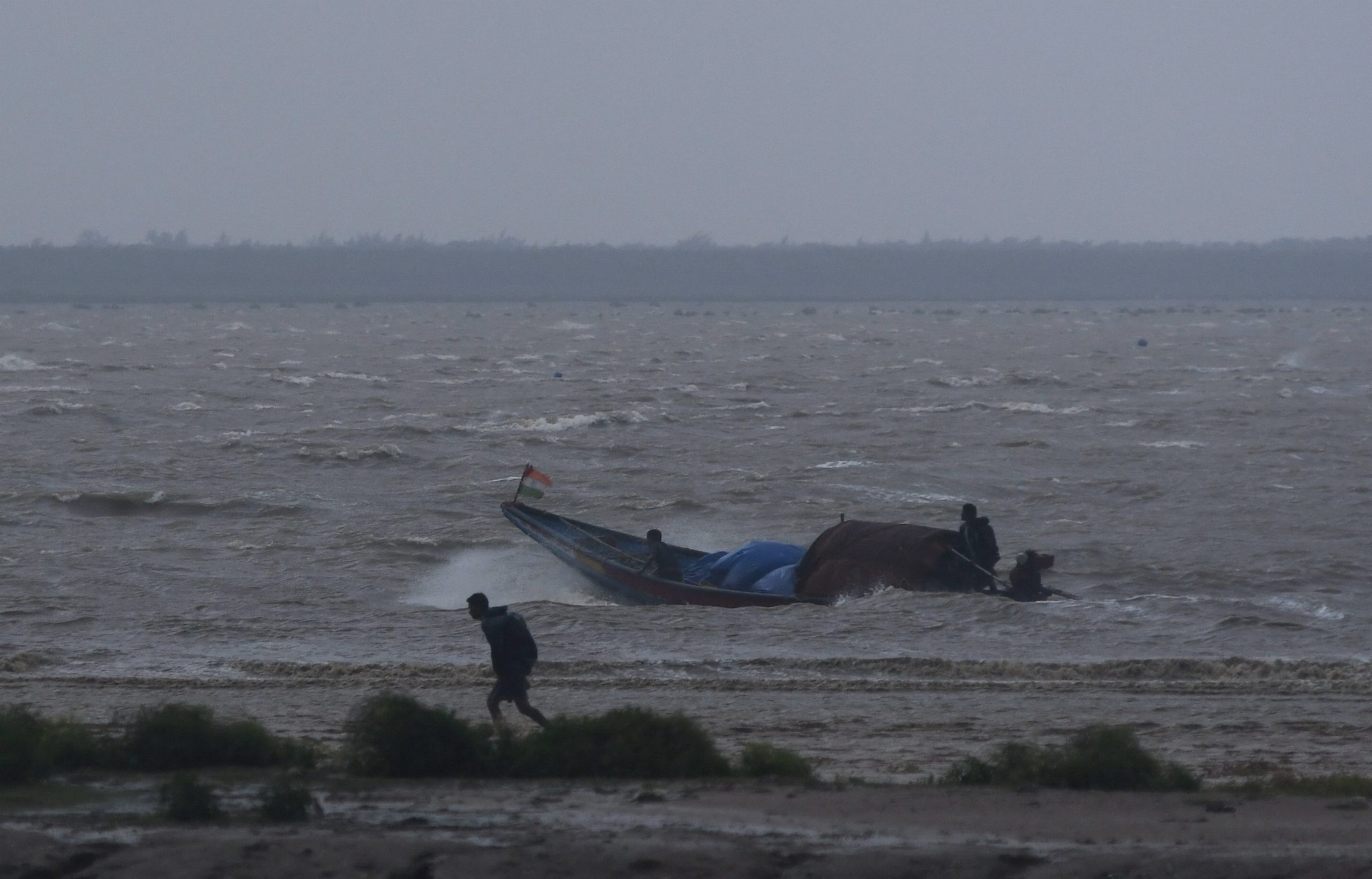India is once again bracing for the wrath of nature as Cyclone Dana approaches the eastern states of Odisha and West Bengal. With nearly 1.5 million people being evacuated from vulnerable coastal areas, the country is deploying thousands of relief workers and mobilizing resources to mitigate the storm’s potentially catastrophic impact.
The Indian government, state authorities, and disaster relief teams are racing against time to protect lives and property, with Cyclone Dana expected to make landfall within the next 24 hours.
This crisis, while daunting, is not unfamiliar to India. The coastal regions of Odisha and West Bengal experience severe cyclones nearly every year, a recurring natural threat that challenges the country’s disaster preparedness and response systems. Cyclone Dana, with projected wind speeds of 100-120 km/h (62-74 mph) and heavy rainfall expected to pound the coastline, serves as a stark reminder of the precarious balance between nature’s unpredictability and human resilience.
As India grapples with this latest cyclone, it sheds light on the larger security implications of natural disasters in the region and the preparedness of one of the world’s most disaster-prone countries.
Cyclone Dana: A Looming Threat
The Indian Meteorological Department (IMD) has issued warnings of a severe cyclonic storm building over the Bay of Bengal, with Cyclone Dana expected to intensify as it moves toward the coastline. The coastal states of Odisha and West Bengal are directly in its path, with landfall anticipated by Thursday evening. For millions of residents, the days leading up to the cyclone have been marked by uncertainty, disruption, and a race to safety.
Odisha, in particular, is familiar with the devastating impact of such storms. In 1999, the state experienced one of the deadliest cyclones in Indian history, killing more than 10,000 people. While improved forecasting systems and early warning protocols have reduced fatalities in recent years, the sheer scale of evacuations and preparation required highlights the ongoing vulnerability of coastal communities.
Authorities have suspended flight operations in the region, canceled over 200 trains, and warned fishermen to stay off the seas. Relief camps have been set up in preparation for displaced families, offering shelter, food, and medical assistance. Odisha Chief Minister Mohan Charan Majhi assured citizens that all necessary measures have been taken to minimize the storm’s impact. “We are fully prepared to deal with the storm. Don’t panic, be safe and be careful,” Majhi stated in a media briefing, reinforcing the state’s readiness to face the storm head-on.

The Evacuation Effort: A Race Against Time
With less than 24 hours until Cyclone Dana’s expected landfall, the focus has shifted to ensuring that as many people as possible are moved out of harm’s way. Odisha, with its long and vulnerable coastline, is evacuating over a million people from 14 districts, while West Bengal has initiated the evacuation of more than 300,000 residents from low-lying coastal areas.
The evacuation is no small feat. It involves coordination between multiple government agencies, local authorities, and disaster management teams, all working in tandem to move people to safety. In coastal towns and villages, buses, trucks, and other vehicles have been dispatched to transport residents to temporary shelters. These shelters, which have been set up in schools, community centers, and other public buildings, are equipped with essential supplies, including food, water, and medical facilities.
Rescue teams are on high alert, with personnel from the National Disaster Response Force (NDRF) and State Disaster Response Forces (SDRF) stationed across vulnerable areas. These teams are equipped to handle not only the evacuation but also the aftermath, which could include flooding, power outages, and infrastructure damage. The Indian Navy and Coast Guard have also been placed on standby, prepared to assist in rescue and relief operations if the cyclone’s impact proves more severe than anticipated.
Impact on Transportation and Infrastructure
One of the immediate effects of Cyclone Dana has been the disruption of transportation services across Odisha and West Bengal. Both air and rail services have been heavily affected, with flight operations from Bhubaneswar and Kolkata airports suspended from Thursday evening until Friday morning. More than 200 trains running through the region have been canceled as authorities brace for the storm’s arrival.
The suspension of transportation services reflects the broader concern for infrastructure damage. High winds, heavy rainfall, and storm surges can cause extensive damage to roads, bridges, and utility networks, cutting off access to affected areas and making relief efforts more challenging. Power outages are also a significant concern, as cyclones often knock down power lines, leaving large swathes of the population without electricity for extended periods.
In Paradip, one of India’s key ports in Odisha, contingency plans have been put in place to ensure the safety of both port staff and residents living nearby. The port, which plays a critical role in India’s maritime trade, is expected to be impacted by strong winds and high waves, prompting authorities to suspend operations and implement emergency protocols.

Battling Annual Cyclones
Cyclone Dana is part of a long history of severe storms that battered India’s eastern coastline with alarming regularity. Odisha and West Bengal are no strangers to cyclonic activity, and the people living in these regions have grown accustomed to preparing for these annual threats. However, despite their frequency, these storms continue to pose significant challenges in terms of disaster management, evacuation logistics, and infrastructure resilience.
The 1999 super cyclone that hit Odisha was a turning point in India’s approach to disaster preparedness. The massive loss of life and widespread destruction prompted the Indian government to overhaul its cyclone response strategy, investing heavily in early warning systems, disaster response training, and infrastructure improvements. The creation of the National Disaster Management Authority (NDMA) and the strengthening of the IMD’s forecasting capabilities have been critical to this effort.
In the years since India has significantly reduced the death toll from cyclones, thanks in part to improved forecasting and faster evacuations. For instance, when Cyclone Fani struck Odisha in 2019, the state evacuated over a million people in record time, resulting in far fewer casualties than would have been expected from a storm of such magnitude. This experience has made the state a model for disaster preparedness, and these same protocols are now being applied as Cyclone Dana approaches.
Climate Change and the Rising Frequency of Cyclones
The increasing frequency and intensity of cyclones in the Bay of Bengal region have raised concerns about the role of climate change in exacerbating these natural disasters. Warmer ocean temperatures are contributing to the formation of more severe cyclonic storms, which in turn bring higher wind speeds, more intense rainfall, and greater destruction.
India, like many other nations, is facing the brunt of climate change’s impact on extreme weather events. The Bay of Bengal, with its warm waters and favorable atmospheric conditions, has long been a breeding ground for cyclones. However, climate scientists warn that these storms are becoming more unpredictable, often intensifying rapidly in a short period, leaving little room for error in forecasting and response.
This unpredictability was evident in Cyclone Amphan, which devastated parts of India and Bangladesh in 2020. Within 24 hours, Amphan escalated from a severe cyclonic storm to a super cyclone, causing widespread destruction and testing the limits of India’s disaster response capabilities. While early warnings and evacuations saved countless lives, the storm left a trail of destruction, particularly in West Bengal.
Cyclone Dana serves as another reminder of the growing challenge that climate change poses for India’s coastal regions. As cyclones become more frequent and intense, the need for robust, climate-resilient infrastructure and long-term disaster mitigation strategies has never been more urgent.
The Role of Technology in Disaster Preparedness
One of the key factors in India’s improved response to cyclones in recent years has been the integration of advanced technology in disaster preparedness and management. The Indian Meteorological Department has significantly upgraded its forecasting capabilities, using satellite imagery, radar systems, and computer models to track storm patterns and predict their intensity and path with greater accuracy.
These technological advancements have allowed authorities to issue early warnings, giving residents more time to evacuate and prepare. Mobile alerts, radio broadcasts, and television warnings are now standard practice, ensuring that even those in remote areas receive timely updates on the approaching storm.
In addition to forecasting, technology plays a crucial role in managing the aftermath of a cyclone. Drones are increasingly being used to assess damage in hard-to-reach areas, while satellite communication systems help maintain contact with isolated communities. Geographic Information Systems (GIS) are also used to map out areas at risk of flooding or storm surges, allowing disaster management teams to prioritize resources and plan more effectively.
Post-Cyclone Relief and Recovery
While the immediate focus is on evacuating residents and minimizing the loss of life, the longer-term challenge will be the recovery effort once Cyclone Dana has passed. Experience from past storms shows that the aftermath of a cyclone can be just as devastating as the storm itself, with homes destroyed, crops ruined, and livelihoods disrupted.
In Odisha and West Bengal, where agriculture is a primary source of income for many families, the destruction of crops due to flooding and high winds can have lasting economic impacts. The recovery process, therefore, involves not only rebuilding physical infrastructure but also providing financial support and resources to affected communities to help them get back on their feet.
The Indian government has already allocated emergency funds to the states in Cyclone Dana’s path, and additional financial aid will likely be necessary in the weeks and months to come. The focus will be on rebuilding infrastructure, restoring power and communication networks, and providing food and clean water to displaced residents.
Resilience in the Face of Nature’s Fury
As Cyclone Dana barrels toward the Indian coastline, the country’s disaster management system is once again being put to the test. The evacuation of nearly 1.5 million people, the suspension of transportation services, and the mobilization of thousands of relief workers highlight the scale of the challenge India faces in protecting its citizens from natural disasters.
However, India’s experience with past cyclones has shown that the country is capable of rising to the occasion. Through improved forecasting, technological advancements, and well-coordinated disaster response, India has significantly reduced the loss of life from cyclones in recent years. Cyclone Dana, while a formidable threat, is also an opportunity to demonstrate the progress that has been made in disaster preparedness and to identify areas where further improvements are needed.
In the face of growing threats from climate change and increasingly severe cyclonic storms, India’s resilience will continue to be tested. But with each challenge, the country’s capacity to protect its people and rebuild stronger becomes more evident.



